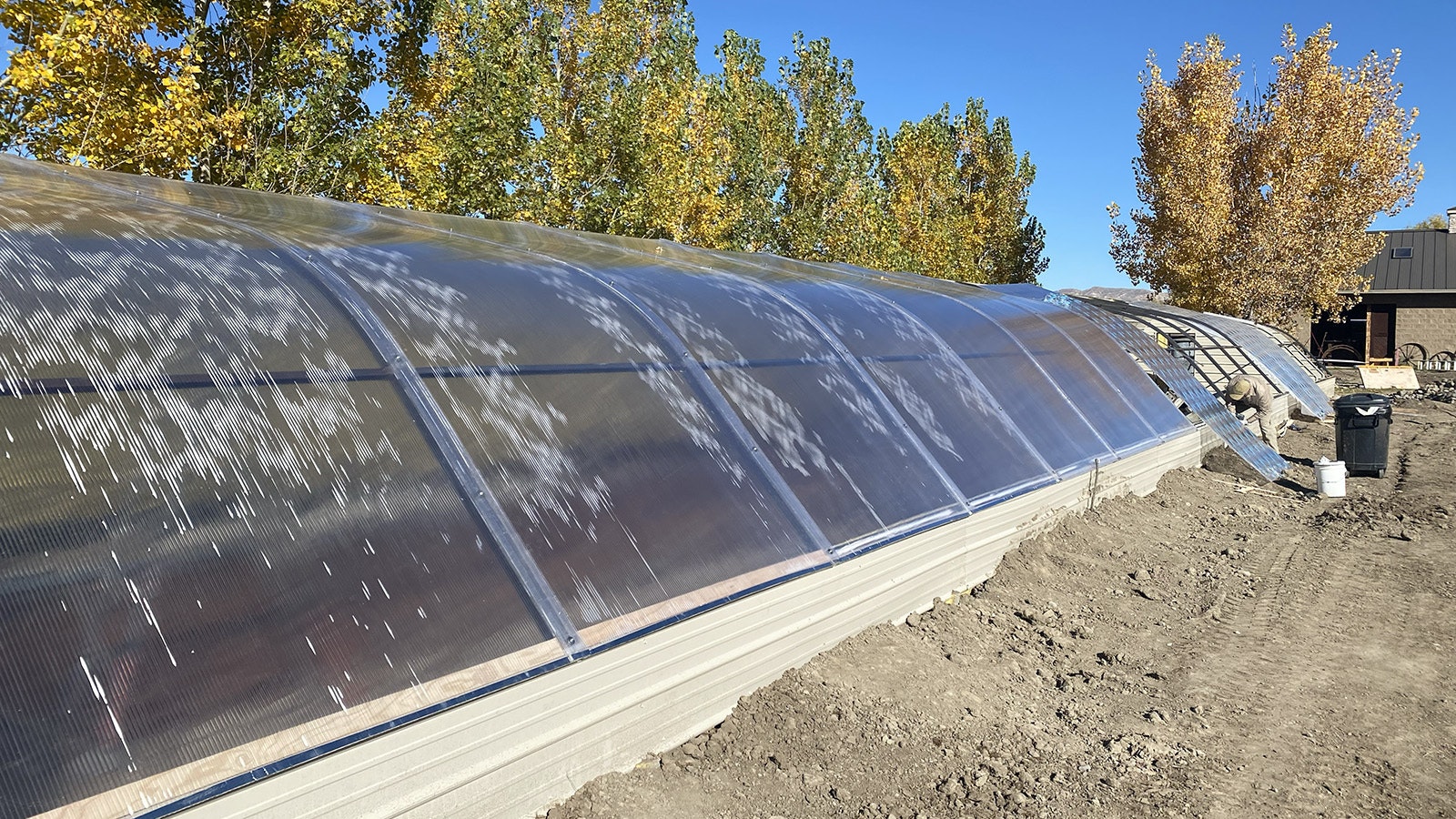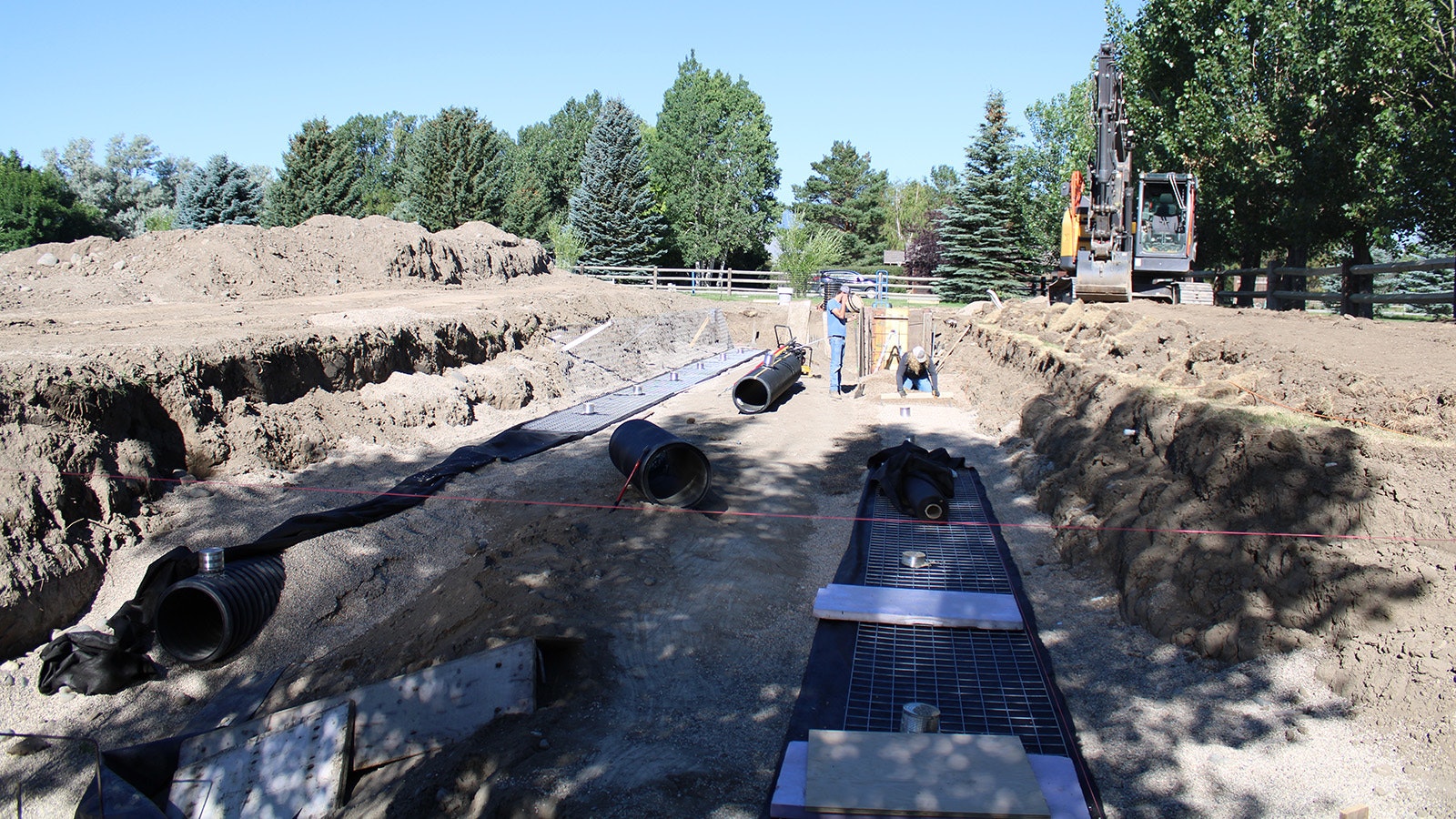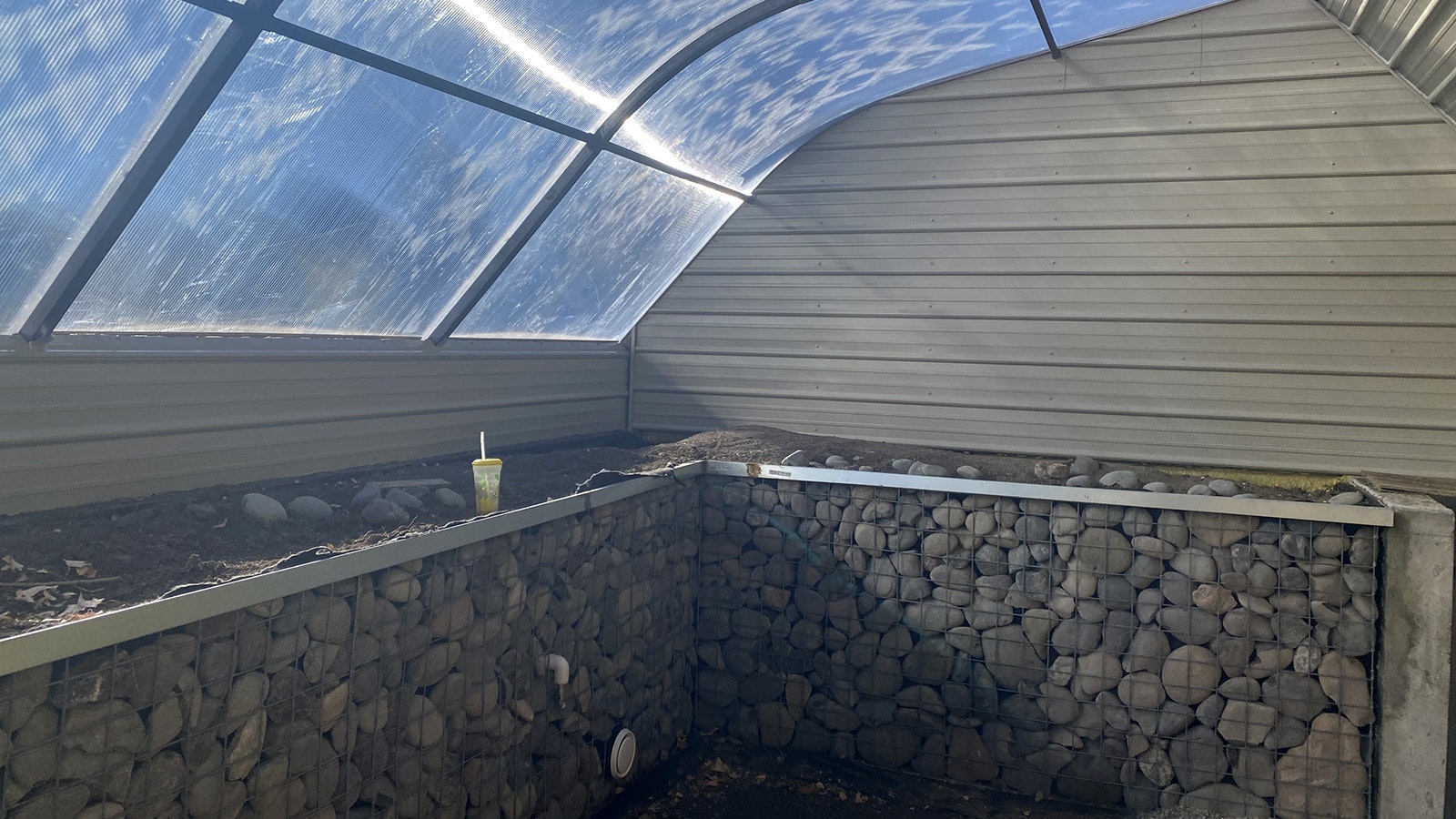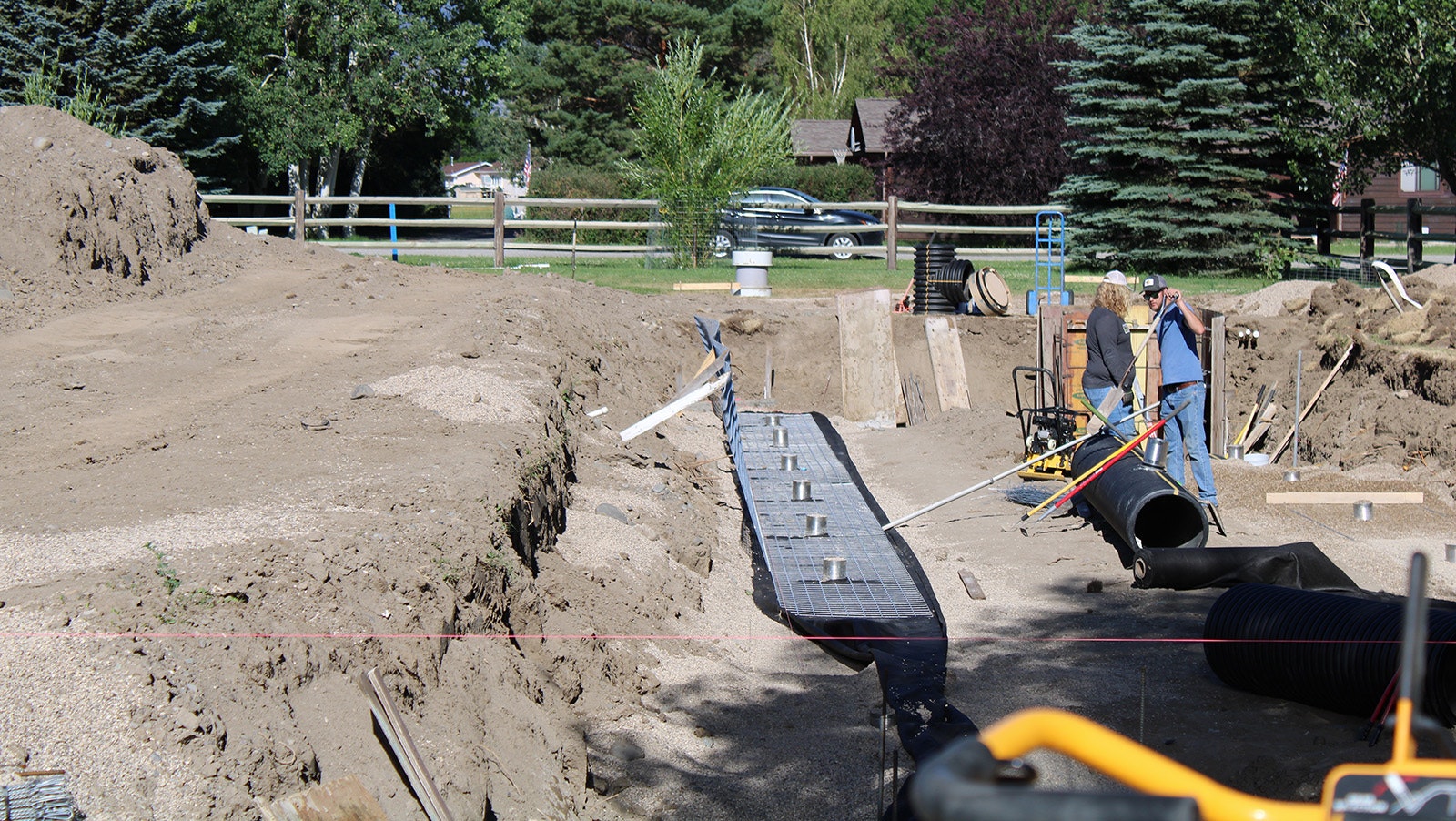CODY — The weather outside may be turning to winter, but Cody resident Karl Lampe has no intention of letting that get between he and his wife’s fruit.
The couple is building a geothermal greenhouse at their home that they believe features a revolutionary design. A geothermal greenhouse is a partially subterranean structure that relies on the natural heat of the earth to heat and cool what’s growing inside.
His inspiration for the project, Lampe said, is simply to please his wife, who already keeps a small domed greenhouse on their property.
“It’s going to be awesome,” said Lynn Lampe with a smile.
How Does It Work?
Geothermal energy that radiates from the ground cools the greenhouse in the summer and keeps it warm in the winter. Although the top layer of soil freezes up during Wyoming winters, the ground temperature 10-12 feet below the surface is typically closer to around 50 degrees.
At that depth, Lampe’s greenhouse will have energy transfer tubes placed to allow warmer air to rise into the greenhouse.
One of the major challenges that greenhouses present is not staying warm in the winter, but cooling down during the hot summer months.
“All of a sudden you have a 95-degree day, you go in there and your tomatoes don’t come back,” Lampe explained.
Geothermal farming itself isn’t a new concept and has been allowing people to successfully grow tropical fruits in cold winter climates.

Revolutionary Design
What makes Lampe’s 1,836-square-foot greenhouse unique is that it will use a complex circulation system that filters in both hot and cold air from the ground and is self-controlled automatically.
There will be separate distribution systems for the hot and cold air, which will flow out of small adjustable tubes jutting from the base of the greenhouse.
The unique project is being built by Mike Poulsen, a fellow Cody resident and owner of Alpine Botanica, a construction company that specializes in greenhouses. Lampe designed the concept and then handed it off to Poulsen for implementation.
Because of the advanced technology, Poulsen believes the Lampes’ design will achieve a higher average temperature in the winter than other geothermal greenhouses.
“The goal with this one is to see how effective and how much we can reduce energy inputs and utilizing the most out of the ground energy, the geothermal battery,” he said.
The complex nature of the tubes necessitates a slow and deliberate construction, Lampe said.
“That’s the big difference between this and everybody else’s,” he said, adding that possibly the best part of all is that it will only cost about 50 cents a day to run.
The greenhouse will feature air dampers to control which way the air flows and grow beds that will also serve as retaining walls to hold back the outside dirt.
The project follows a similar greenhouse that grew citrus fruit year-round in Nebraska. Lampe visited the project, which he described as “a jungle … in the middle of winter.”
“What we’re going to do is repeat that concept in here,” he said.
The Lampes plan to plant 16 fruit trees down the center of the greenhouse.
Lynn Lampe said they specifically want to grow citrus to help with their intake of vitamin C and better control the fruit they consume.
“The citrus, by the time it gets to us, has been sitting in some warehouse for forever and it’s just getting worse and worse and they’re modifying it,” she said. “It does taste different. I mean, it’s all the difference in the world. The more healthier you can eat the better.”
Along the sides of the structure they will grow other produce. Outside, they’ll grow a variety of berries.
A Larger Effort
Lampe’s geothermal greenhouse is the second that Poulsen has built in Park County, having already completed an 812-square-foot project in the South Fork last spring.
Poulsen also is attempting to launch a variety of composting initiatives in Cody as a way to make the town more self-dependent. His goal is to not only build for individual clients, but to expand the geothermal greenhouse concept into a dovetailed community garden and compost program.
The concept of community sustainability is one that has grown exponentially in recent years along with an increase in farm-to-table businesses and community gardens.
“Expanding the green thinking in Cody and trying to get Cody more self-sufficient and self-reliant, more interconnected community,” Poulsen said.

Leo Wolfson can be reached at leo@cowboystatedaily.com.








